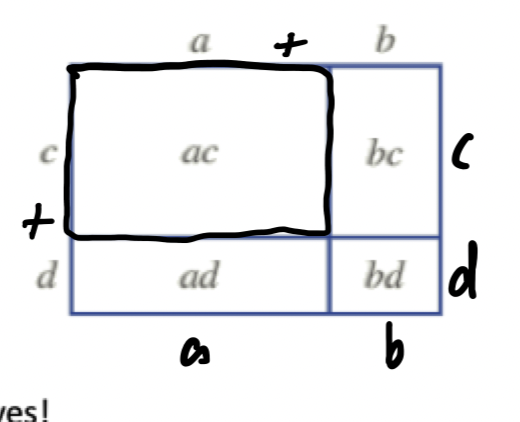Algebra, Indices, Equation & Trigonometry
algebra:
Subtraction & addition-consider like terms
cancellation: only works for factors
when expanding, apply foil (if it is a binomial) or go from left to right

Factorise by: HCF, grouping,
indices:
when working with indices, start from the inside out
Base is the big number, index/power is the small one on the upper righthand side
anything to the power of 1 is equal to itself
prime factorisations involve writing out a factor tree to sum up the prime factors of a number (both LCM and HCF)
If bases are the same, add together the powers when multiplying
If bases are the same, subtract together the powers when dividing
If a base is to the power of 0 (zero), it equals to 1
The base cannot be 0 for powers of 0 = undefined
When raising a term (in brackets), keep the base and multiply indices
eg; (3³)⁸ = 3³ˣ⁸ = 3²⁴
When indices are applied to fractions with brackets, apply the power to the top and bottom
negative index: must put in reciprocal before solving
x−1 = 1/x
reciprocal: flipped version of number
Equations:
equation: and expression with an equal sign
Have to rearrange equations so then the variable is on one side (LHS OR RHS)
Check by substitution
When moving across equal sign, do the opposite operation
If variables on both sides, group them to one side like ‘like terms‘
Steps to solve word equations:
Read the question
Define pronumeral (eg; Let x be the number of…)
Write equation
Solve equation
Answer question in words
Check if it makes sense (subbing in equation, checking if its supposed to be positive or negative…)
Inequalities
the bigger side of a sign is pointing to the bigger number
close circles include (its including the hole in the middle)
open circles exclude (O for open)

Quadratics are equations where highest power is 2
basic form ax²=c
always 2 solutions when the number is greater than or equal to 1(positive or negative)
always 1 solution when the answer is 0
always 0 solutions when the answer is negative
leave answers in surd form
When a binomial = 0, the two solutions are the numbers with their sign flipped
eg; (x-4)(x-5) = 0. solutions are x=4, x=5
Cubics
basic form ax³=c
don’t need to worry about +-
Trigonometry:
Pythagoras: a²+b²=c²
Trigonometric Ratios:
theta: the angle you are trying to find
opposite: opposite theta
hypotenuse: opposite right angle
adjacent: next to theta

sin θ = opposite/hypotenuse (SOH)
cos θ = adjacent/hypotenuse (CAH)
tan θ = opposite/adjacent (TOA)
when finding unknown sides, sub in to find pronumeral
when finding unknown angles, use inverse sin/cos/tan to find theta
angles of elevation and depression are equal due to alternate angles

Bearings
compass bearings - two compass directions (n/s and w/e) and an acute angle in the middle (WHICH IS ALWAYS MEASURED TO THE VERTICAL aka N/S)
true bearings - three digit clockwise system (eg; 273˚, 090˚)
always use arrows for bearings so you know what direction
eg; A from O is an arrow going from point O to A